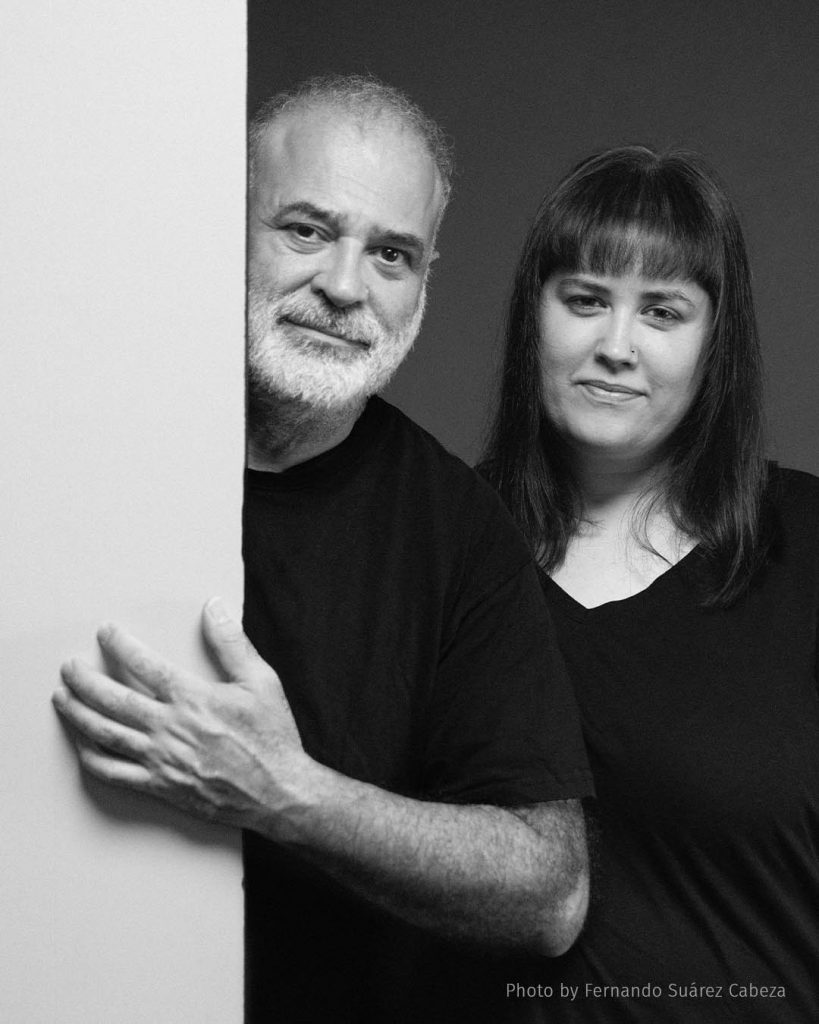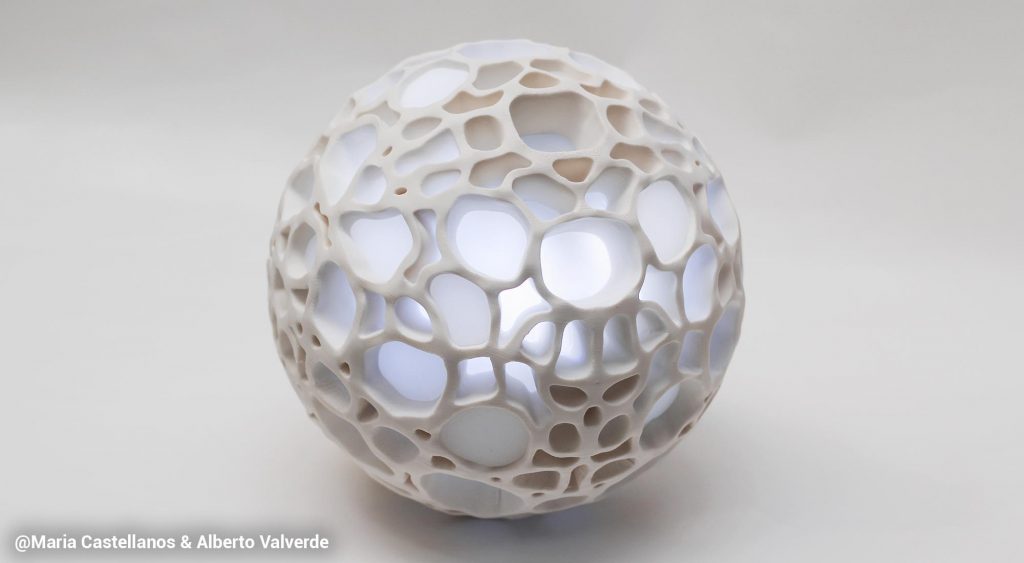HUNGRY ECOCITIES : Paths to progress Experiments
+ PROJECT
(BE)ETOGETHER
Maria Castellanos + Alberto Valverde & Beesage
SUMMARY
A third of the food we eat depends on pollinators, especially bees. They sustain biodiversity, enable plants to reproduce, and support the intricate web of life in our ecosystems. Yet, habitat destruction, pesticides, and climate-changing emissions now threaten their survival.
For thousands of years, humans have kept hives, domesticating bees to harvest honey and wax. But this long relationship has often treated bees as resources to manage, rather than beings to understand.
What if we could listen to bees through technology as collaborators whose needs and behaviors invite attention and care?
Listening to non-humans has guided the work of María Castellanos and Alberto Valverde for over fifteen years. Their research into the “secret language” of plants explored how humans, non-humans, and machines can enter into meaningful dialogue. Working with bees was a natural evolution, extending their inquiry from flora to the creatures that share and sustain the ecosystems.
In collaboration with Olaya Miel, a family-run ecological beekeeping initiative in Asturias, Northern Spain, and BeeSage, a pioneering beekeeping technology company, Castellanos and Valverde set out to create a system that could perceive the hive on its own terms. This collaboration blended artistic vision, generational apiculture knowledge, and advanced sensor technology, aiming to shift the logic of beekeeping from control to care — from extraction to empathy. Inspired by Donna Haraway’s concept of “making-with,” the project seeks not to impose a human perspective on bees, but to translate their signals and rhythms in ways humans can understand without dominating.
The resulting experiment was a comprehensive monitoring system that combined multiple technologies. Hive weight, temperature, and humidity were tracked by BeeSage’s HiveScale and HiveNodes; external conditions, including air quality, UV radiation, and wind, were measured by open-source sensors developed by the artists and adapted for rural outdoor conditions. AI-powered cameras observed bee traffic, and contact microphones captured the subtle vibrations of the hive — frequencies unique to collective bee behavior.
As thousands of data points were collected and analyzed, patterns began to emerge. Bee activity responded to temperature, light, and UV radiation, while high humidity curtailed movement. Subtle changes in the hive’s sound foreshadowed bee movements, with lower-frequency, continuous buzzing signaling periods of intense activity.
From these discoveries, the artists developed (Be)etogether – The Interface, a device that translates hive rhythms into light, vibration, sound, and airflow — patterns humans can perceive. Its design, blending rigid and soft materials inspired by wild hive architecture, offers a sensitive, responsive, and non-intrusive way to connect with bees. The interface allows humans to follow the daily life of the apiary, sensing when bees are active, resting, or when environmental changes affect their behavior. Through this work, previously invisible experiences become perceptible, opening new possibilities for interspecies understanding and care.
(Be)etogether proposes a new model of collaboration between humans and bees. For beekeepers, it provides tools to anticipate challenges, align with seasonal rhythms, and reduce stress on colonies. For technology, it demonstrates that AI and sensors can be applied not only for efficiency but for care and empathy. And at the broader ecological level, it reimagines our relationship with pollinators, emphasizing that the well-being of bees is inseparable from the well-being of entire ecosystems.
In listening, observing, and responding, (Be)etogether reminds us that care begins with attention — and that technology, when designed to respect non-human perspectives, can foster connection, understanding, and reciprocal flourishing across species.

DEVELOPED PROTOTYPES:
Transforms internal hive data into a sensory experience: light, sound, vibration, and airflow that allow you to “feel” the life of the bees from within.
The kit captures temperature, humidity, vibrations, sounds, bee movements, and air quality, along with periodic images of the hive environment. Thanks to this network of sensors and AI processing, behavioral patterns, hive health, and anticipated nectar flows can be monitored.
AI image recognition to automatically detect and count varroa mites from photos of monitoring boards — making hive health assessment faster, more accurate, and less invasive.
UPDATES
● Otras inteligencias de María Castellanos en Sónar+D 2025
National press specialized in art and design: Neo2, 12/06/2025
The article is the result of an interview that discusses various works and artistic trajectories in general, but a significant portion of the article is dedicated to the (Be)etogether project.
● Artnobel (magazine nº25) pp.56-59, 06/2025
National press specialized in art: Artnobel Inspiration Review of Contemporary Art is a digital magazine that promotes art with a strong presence on the Internet since 1999.
● En Felechosa hay una colmena cyborg y así es cómo funciona: ¿es posible controlar desde casa a las abejas?
Local Press: newspaper La Nueva España, 01/06/2025
The article that was published both in the print edition and the online version of the newspaper can be seen at the link, following an interview by Chus Neira.
● Un estudio del comportamiento de las abejas busca mejorar la producción de miel
Local TV: TPA (Televisión del Principado de Asturias), 18/05/2025
The video shown on the May 18, 2025 news broadcast on the public television channel of the Principality of Asturias can be viewed at the link.
+ ARTIST
Maria Castellanos + Alberto Valverde

Spain
María Castellanos and Alberto Valverde began working as an artistic duo in 2009. María Castellanos holds a Ph.D. in Fine Arts from the University of Vigo and served as a postdoctoral researcher at Oslo Metropolitan University (Norway) as part of the FeLT – Futures of Living Technologies – project from 2021 to 2023.
Alberto Valverde is an artist and technologist with a strong background in mathematics and extensive experience in system design, interactive environments, multimedia, and robotics.
“The wellbeing of bees is also the wellbeing of our ecosystems. Technology, when guided by care, becomes a language of empathy, and listening is the first act of care.”
María Castellanos & Alberto Valverde
+ SME
BEESAGE

Beekeeping
Rotterdam, NETHERLANDS
Modular beehive monitoring system that boosts productivity and honey yield to benefit the Earth through data-driven beekeeping. Our software and hardware help beekeepers, farmers and conservation stakeholders mitigate risks and enable informed decisions.
“This collaboration was driven by artistic curiosity, which broadened our perspective and enriched the project’s creative dialogue. It celebrated and honoured the pollinators at the heart of our mission.”
Ru Wikmann, Founder & CEO, BeeSage


The HungryEcoCities project has received funding from the European Union’s Horizon Europe research and innovation programme under grant agreement 101069990.
